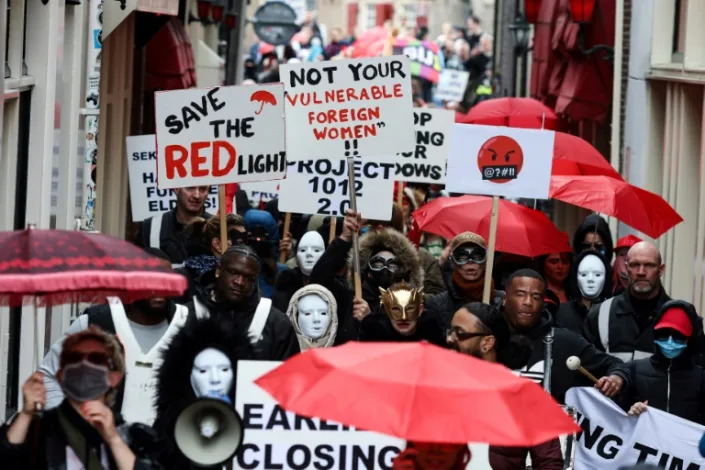Clean electricity was one of the stars of Tuesday's federal budget, with almost $1 in every $8 of new spending the budget anticipates in the next five years targeting Canada's electricity dreams.
That includes a new tax credit worth 15 per cent of investments made to build new renewable energy infrastructure, including wind and solar plants, nuclear reactors, emissions-trapping natural gas plants, new transmission lines between provinces and territories and stationary electricity storage, such as batteries.
The tax credit is set to kick in a year from now, be available for 10 years and cost an estimated $25.7 billion by the time it winds down in 2035.
And another $3 billion is being added by 2035 to a program that gives grants to companies and provincial and territorial governments that are looking to modernize existing power grids or install new renewable power.
Why is all this money necessary?
Here's a snapshot of Canada's power situation and Ottawa's aspirations of what it could be.
1. Clean power, all the time
Canada's target is to make the entire power grid entirely emissions-free by 2035. By 2050, the entire economy is to produce no emissions it cannot capture with nature or technology. At the same time, power needs are being driven by the electrification of the economy, including transportation. All those electric vehicles have to get their charge from somewhere.
The only way to do all of that is to make a lot more power, and make more of it come from renewables. The country is already getting off coal, the most emissions-intensive source of electricity. Ontario eliminated coal in 2014, and by 2030, Canada's regulations require all coal power plants to be closed or abated with carbon capture and storage technology.
The United Nations recently said that wealthy countries like Canada need to get off natural gas, too, but Environment Minister Steven Guilbeault has been clear that eliminating it as a power source isn't realistic for Canada, and the emissions it produces can be captured.
Coal now accounts for seven per cent of our electricity, and natural gas 11 per cent. Hydroelectricity is about 61 per cent, nuclear about 12 per cent and wind about six per cent.
The Canadian Climate Institute said last year that to power its net-zero economy in 2050, Canada will need two to three times as much power as it generates now. And 75 per cent of the additional power will have to come from renewables like wind and solar to ensure that Canada doesn't exceed its emissions goal.
Renewables are already growing quickly. In 2010, wind made up less than one per cent of the total power that was generated. The Canada Energy Regulator predicts that by 2050, wind will make up almost one-fifth of the country's total electricity production.
2. The dream of an east-west power grid
In the 19th century, it was a national railroad. In the 20th, it was a national highway.
Now, in the 21st, the coast-to-coast connectivity dream is an east-west power grid, one that connects provinces with power to sell to those who need to buy it. Largely due to geography, there are many power lines between Canada and Northern U.S. states. But there are very few connecting one province to another.
It has been a dream, particularly in power-rich provinces such as British Columbia, Manitoba and Quebec, to build transmission lines to sell their clean hydroelectricity to places like Alberta, Saskatchewan, Ontario and the Maritimes, which have been more dependent on coal and natural gas. That dream has been dashed many times, with repeated failures to build a transmission line from Northern Manitoba to Ontario and from British Columbia to Alberta.
The latest interprovincial proposal, the Atlantic Loop, has been in negotiation for more than three years already. The project would connect hydroelectric power from Quebec and Labrador to displace coal-fired power in New Brunswick and Nova Scotia. Ottawa has expressed keen interest, and the premiers are all pretty gung-ho. But even in Tuesday's clean-electricity heavy budget, the project is still just listed as being negotiated. The timeline for its completion extends to 2030.
3. Red tape everywhere
Natural Resources Minister Jonathan Wilkinson points out, any time he is asked about a national grid, that connecting power between provinces is a complicated effort. There is provincial jurisdiction over resources and federal environmental jurisdiction over interprovincial projects. There is the need for Indigenous consultation and buy-in. Not to mention the 10 different provincial electricity regulatory systems and the federal government's myriad of electrical rules and policies.
Electricity Canada's recent report on the "state of the Canadian electricity industry" in 2023, says the federal government alone has more than 90 different regulations affecting electricity, from greenhouse gas policies and fisheries and migratory birds.
Politics and regulatory reviews meant it took Manitoba more than 10 years to build a single, 1,400-km transmission line from its northern dams to its southern power customers. The Bipole III line was an election issue during at least three provincial campaigns in Manitoba.
Canada is in now the midst of developing regulations to enforce its 2035 clean power grid goal. The regulations were initially expected in December, but they have been delayed.
4. Big money
The Conference Board of Canada has estimated it could cost more than $1.7 trillion to get Canada's power grid to produce as much power as is needed, without emissions, by 2050.
Connecting provinces by power lines will also carry a hefty price tag. In 2016, B.C. estimated a new transmission line to Alberta would cost $1 billion. Bipole III, completed in 2018 after four years of construction, cost more than $5 billion. And the Atlantic Loop estimate is also $5 billion.
But it is getting cheaper to build renewable power. Unlike a coal, gas or nuclear plant, which all have to buy input fuels to make electricity, solar and wind farms source their power for free, so the costs have more to do with construction and maintenance.
As demand grows and technology improves, the cost of solar and wind power has plummeted. Globally, the cost of solar power fell 90 per cent between 2009 and 2019 to an average of US$40 per megawatt hour of power. Wind power costs fell from US$135 to US$41 per megawatt hour.
A natural gas plant can cost about US$56 per megawatt hour, but that's not including the technology Canada will insist on to trap its greenhouse gas emissions. Coal power was about US$109 in 2019, but Canada is phasing out coal, and no new coal plants will be built. The average Canadian home uses about 25 megawatt hours of electricity in a year.
5. The copper conundrum
Building all this new power is going to require materials, and lots of them. Steel, fibreglass, plastics, and aluminum for wind turbines. Silicon, glass, aluminum and other materials for solar panels. Transmission lines and towers will also require steel and millions of kilometres of wires, which in turn will require millions of tonnes of copper.
Jerome Leroy, the vice-president of the business unit at Nexans North America, said a clean power grid by 2035 is a big ask to get all the wire made, and all the copper needed.
"It is a challenge," said Leroy, whose company makes electrical transmission lines.
He said that last year, the global supply of copper was about 23 million tonnes, mainly sourced from Canada, the United States and South America. Demand was just under that at 22 million tonnes, with more than half of that consumption coming from China. By 2030, the expectation is that supply may grow to 27 million tonnes, but demand will grow to 35 million tonnes.
Leroy said there are ways to get more copper, largely through recycling programs that seek to remove copper from transmission wires that are being replaced, and from the scraps of the new ones being installed. Getting copper from scrap wire alone could add four million tonnes of copper back into the supply chain, he said.
But the capacity to turn that copper into usable wires and transmission lines is also not big enough. Leroy said the challenge is not insurmountable, but is one that must be addressed.
This report by The Canadian Press was first published March 29, 2023.
This is a corrected story. An earlier version misidentified Jerome Leroy from Nexans North America as Jerome Fournier from Nexans Canada.



